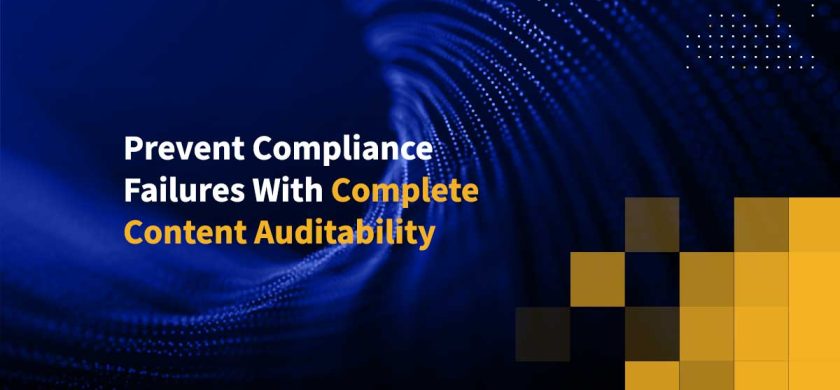
Prevent Compliance Failures With Complete Content Auditability
The main goal of your secure content sharing channel is to protect your IP, PII, PHI, and other sensitive information. It is critical that you have complete confidence in this outcome. Moreover, the modern CISO must provide proof of protection to internal auditors, to government regulators, and in many cases to external parties, such as consumers, investors, attorneys, and so forth. To prevent compliance failures, you must have complete auditability of all content, all content sharing, and all content-related systems, policies and procedures.
CISOs must enable secure content communication that balances the protection of sensitive content with the overwhelming need to share it, easing access while preventing breaches, ensuring privacy alongside transparency, and adhering to complex regulations without getting in the way of efficient communication. Each trade-off entails risks. This blog series explores these trade-offs and offers six guiding principles for creating a secure content sharing channel that enables work across the extended enterprise and protects your most sensitive digital assets.

In my last blog post, I explored how CISOs can protect their organizations from a breach once they control every file saved and retrieved from every enterprise content repository. Today, I’ll discuss how CISOs can prevent compliance failures with complete auditability of their content and all content systems, policies, and procedures.
Support Compliance Processes With Accurate and Timely Reporting
Since I began this blog series with the end in mind, you’ll recall our first principle gives us total visibility. We already know who shared what with whom, when, where, and how. We also know what content passed or failed AV, DLP and ATP scans. Auditability requires keeping a historical record of everyday visibility. Audits can be very cumbersome and time-consuming, so audibility also entails supporting compliance processes with accurate, timely reporting. Specific requirements will vary by sector, such as healthcare, financial services, government, and consumer, but the end goal is the same: prove that sensitive information is handled in compliance with IT policy and the law.
This concludes my series on the risky business of online collaboration. I hope you enjoyed it. Here’s a recap of the six guiding principles CISOs must follow to create a secure content communication channel that enables work across the extended enterprise and protect their most sensitive digital assets:
- Visibility – protect your IP with complete visibility into every sensitive file exchange
- Security – enable workflows while preventing costly data breaches
- Confidentiality – balance content security and content access with granular governance
- Simplicity – eliminate shadow IT with secure content access that doesn’t slow workflows
- Uniformity – avoid data breaches with a secure inner perimeter around your most valuable digital assets
- Auditability – prevent compliance failures with complete content auditability
To learn more about preventing compliance failures with complete auditability of your content and all content systems, policies, and procedures, schedule a custom demo of Kiteworks today.
Frequently Asked Questions
Regulatory compliance refers to the adherence to laws, regulations, guidelines, and specifications relevant to an organization’s business processes. Compliance is crucial for maintaining the company’s reputation, avoiding legal penalties, and ensuring the safety and security of operations.
Regulatory compliance affects different industries in various ways, depending on the specific regulations applicable to each industry. For instance, healthcare organizations must comply with regulations like HIPAA that protect patient data, while financial institutions must adhere to regulations like the PCI DSS that aim to prevent financial crises. Department of Defense contractors must comply with CMMC. Non-compliance can result in severe penalties, including fines and reputational damage.
Some common challenges include keeping up with changing regulations, managing and securing data, training employees on compliance requirements, and allocating sufficient resources for compliance activities. Additionally, global organizations may face the added complexity of complying with regulations in multiple jurisdictions.
Organizations can demonstrate their compliance with regulations through various means, such as maintaining comprehensive documentation of their compliance activities, conducting regular audits, and providing training records. In addition, some regulations may require organizations to submit regular reports or undergo external audits to demonstrate their compliance.
Data encryption plays a crucial role in regulatory compliance as it helps protect sensitive data from unauthorized access. Many regulations require organizations to implement appropriate security measures, including encryption, to safeguard data. By encrypting data, organizations can ensure its confidentiality and integrity, thereby helping to maintain compliance.
Additional Resources